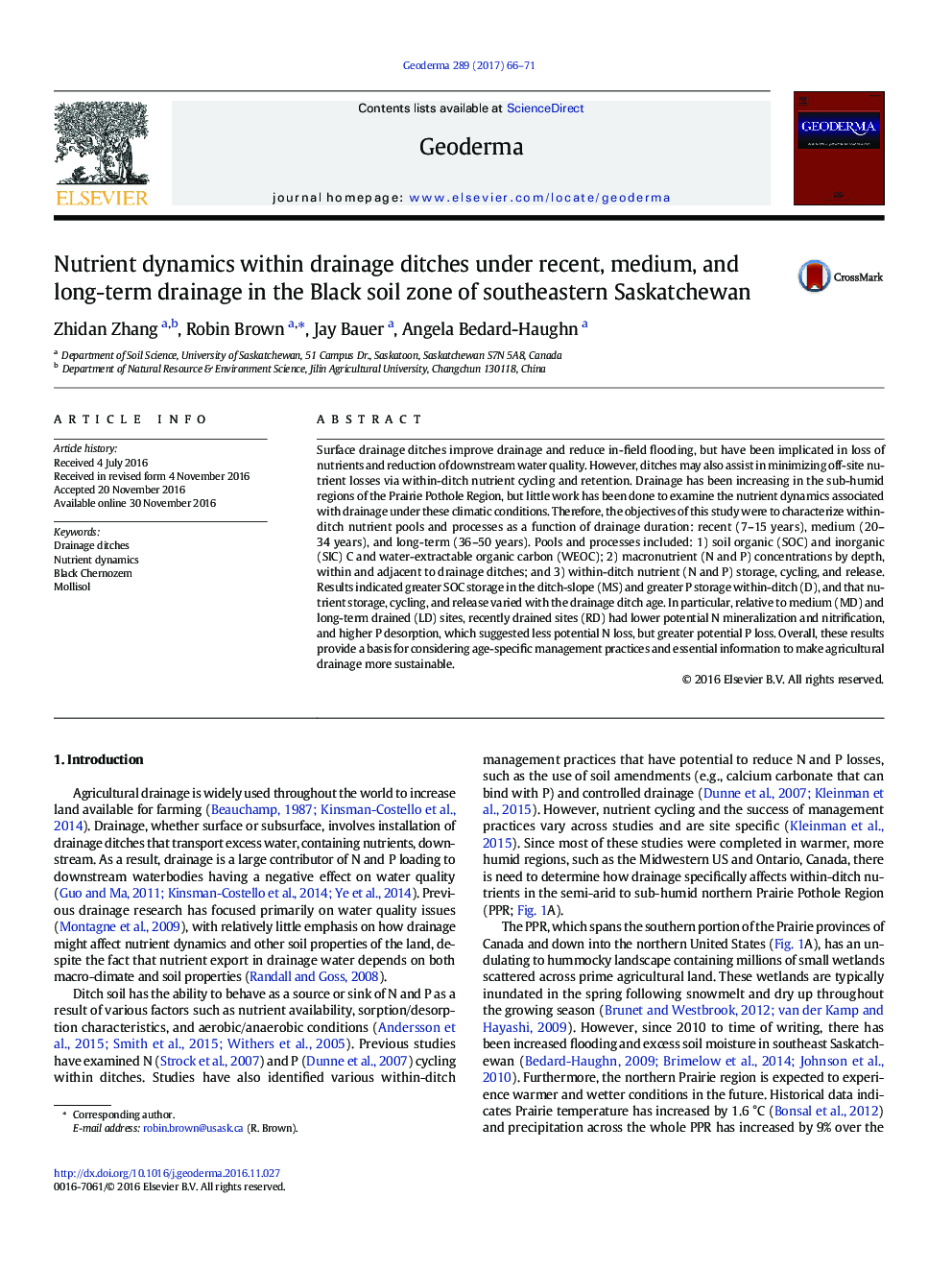| Article ID | Journal | Published Year | Pages | File Type |
|---|---|---|---|---|
| 5770714 | Geoderma | 2017 | 6 Pages |
â¢Greater SOC storage in ditch-slope soils versus ditch bottomâ¢Nutrient storage, cycling and release vary with drainage ditch age.â¢Recently drained ditches (7-15 years) may have less potential N loss, but greater P loss.
Surface drainage ditches improve drainage and reduce in-field flooding, but have been implicated in loss of nutrients and reduction of downstream water quality. However, ditches may also assist in minimizing off-site nutrient losses via within-ditch nutrient cycling and retention. Drainage has been increasing in the sub-humid regions of the Prairie Pothole Region, but little work has been done to examine the nutrient dynamics associated with drainage under these climatic conditions. Therefore, the objectives of this study were to characterize within-ditch nutrient pools and processes as a function of drainage duration: recent (7-15Â years), medium (20-34Â years), and long-term (36-50Â years). Pools and processes included: 1) soil organic (SOC) and inorganic (SIC) C and water-extractable organic carbon (WEOC); 2) macronutrient (N and P) concentrations by depth, within and adjacent to drainage ditches; and 3) within-ditch nutrient (N and P) storage, cycling, and release. Results indicated greater SOC storage in the ditch-slope (MS) and greater P storage within-ditch (D), and that nutrient storage, cycling, and release varied with the drainage ditch age. In particular, relative to medium (MD) and long-term drained (LD) sites, recently drained sites (RD) had lower potential N mineralization and nitrification, and higher P desorption, which suggested less potential N loss, but greater potential P loss. Overall, these results provide a basis for considering age-specific management practices and essential information to make agricultural drainage more sustainable.
